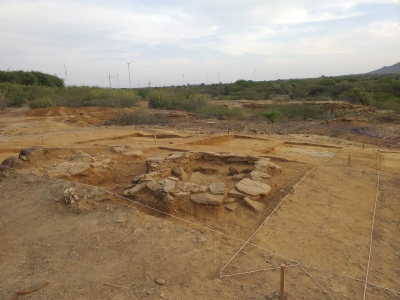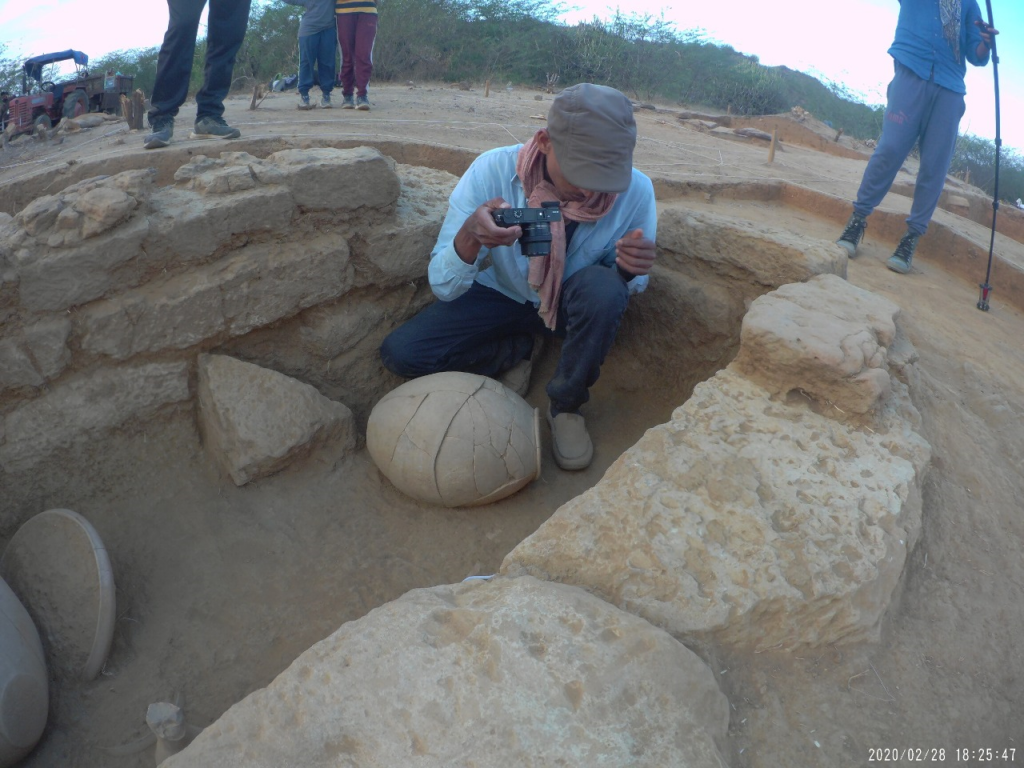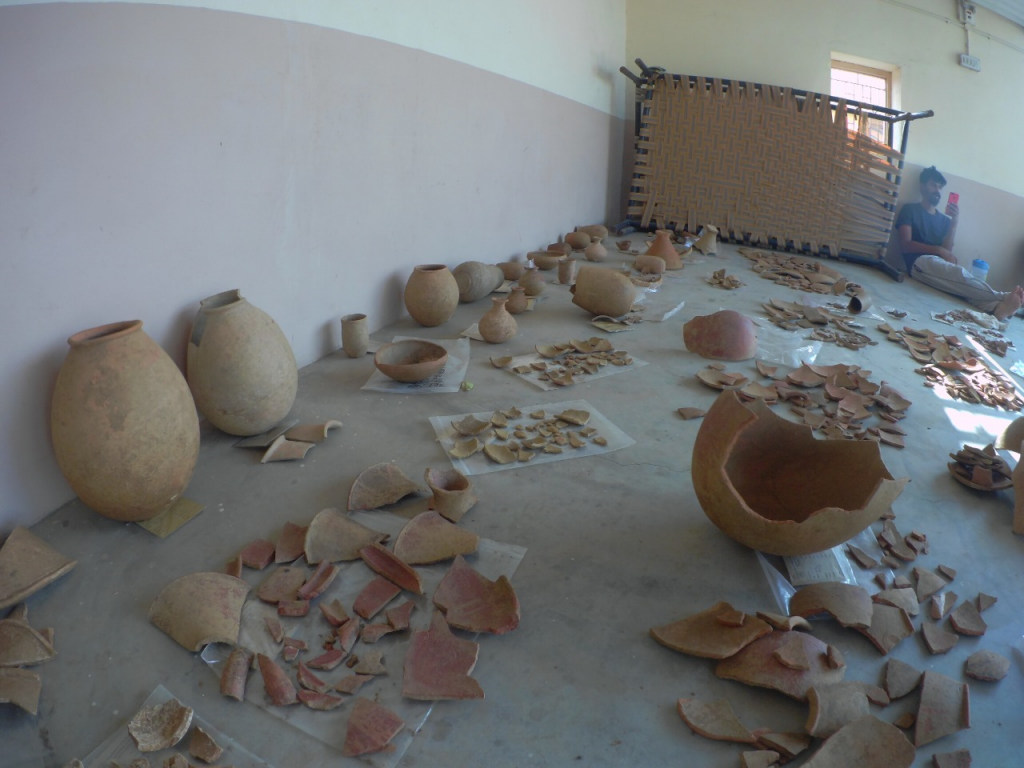
The Kachchh Archaeological Project: trade, pastoralism and the origins of the Indus Civilisation (2021-2023) is an ongoing GIAP collaboration with the University of Kerala (India) and the Institución Milà i Fontanals – CSIC (Spain). It also includes researchers from the University of La Laguna (Tenerife), as well as from Albion College and the Rochester Institute of Technology, both in the United States.
[In the picture: One of the c. 50 burial chambers excavated so far at Juna Khatiya. Note the mounted structure, which was covered with a sandstone block.]
This research initiative will focus on the Kachchh region in the state of Gujarat, north-western India. The project, now in its very initial stage, has been founded by the Palarq Foundation. Francesc C. Conesa, co-director of the project, tells us here a little bit about the initiative (here first posted at the GIAP website).
The development of the Indus civilisation
The project Kachchh aims to shed new light on the role that rural areas played in the development of the Indus civilisation.
Most of the Indus academic corpus has focused primarily on the urban period or Classic Harappan phase (c. 2600-1900 BC). However, we know very little about the pre-urban or Early Harappan phase (c. 3300 and 2600 BC). It is during this early formation stage of the Indus world when complex agricultural and pastoral practices in Kachchh were first seen, thus defining its own regional socio-economic dynamics until the full integration of the area into the Indus Valley.
Until recently, there was only a few evidence for Early Harappan sites in Kachchh, in contrast with the abundant archaeological remains for the urban phase (see for example the impressive archaeological site of Dholavira). This picture started to change with the 2019-2020 excavations of the Early Harappan cemetery of Juna Khatiya by Profs. Rajesh S. V. and Abhayan G. S. from the Department of Archaeology of the University of Kerala.

The excavation works at Juna Khatiya set the project starting point
The research will focus on three key archaeological contexts to better understand the beginnings and development of the Indus Civilization in the region:
1) Early Harappan cemeteries, through the bioarchaeological analysis of the remains at Juna Khatiya, including biogenic isotope from human teeth and residue analysis from artifacts (e.g., microbotanical remains and lipids);
2) Early Harappan settlements, through the detection and excavation of new potential domestic spaces;
3) The cultural landscapes of Kachchh, through the study of ethnographic evidence, long-term land use, and multi-temporal remote sensing datasets.

A masterclass at the Palarq Foundation explains the project and the origins of the Indus civilization
Francesc C. Conesa, co-director of the project, is a postdoctoral researcher at the ICAC since last spring. He joined the GIAP under the direction of Dr. Hèctor Orengo to closely work with the remote sensing team. His research focuses on developing computational workflows to work with Big Earth Data (vast collections of multi-temporal and multi-sensor satellite imagery) to detect archaeological sites -and the risks that threaten their preservation- quickly and efficiently over large areas. Much of this research is centred on drylands, particularly in the semi-arid monsoonal landscapes of the Bronze Age Indus Civilisation in South Asia.
Dr. Conesa recently gave a masterclass (online) at the Palarq Foundation, toghether with Dr. Juan José García Granero (Institución Milà i Fontanals, CSIC), within the framework of its the Series on Archaeology and Paleontology Masterclass. Below the video, where you can know more about the archaeological project in the Kachchh region (Gurajat, India) and how 4,500 years ago this area was especially important for the development of the Indus civilization.
Related news:
“Tras los orígenes de la civilización del Indo”, National Geographic España, March 25th, 2021.
“GIAP goes to India: a new project investigates the origins of the Indus Civilisation”, GIAP website, March 26th, 2021.





